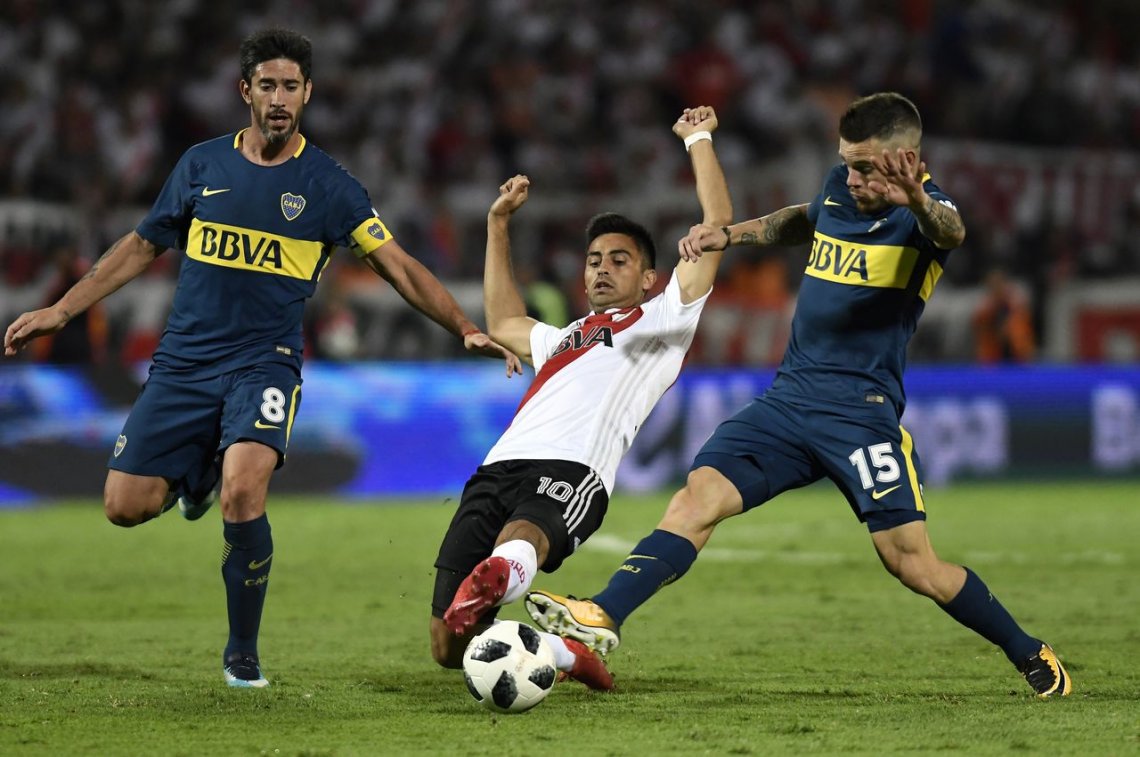
c/o diariopopular.com.ar
“Derby day in Buenos Aires makes the Old Firm game look like a primary school kick-about.”
Examples like this show how cliches are being overused in sports writing. But when Gavin Hamilton, the editor of World Soccer magazine, made this comment in 2004, it was more of a literal instance of ventilating an opinion. In fact, what started as a neighborhood rivalry is now considered one of the world’s craziest sports feuds, producing the most hard-fought and explosive game at least twice a year.
A Superclásico is intense enough when it is a league match. So when Boca Juniors and River Plate meet for the second leg of the competition this Saturday, it will undoubtedly be heated. Imagine Barcelona playing Real Madrid in the Champions League final, the New York Yankees against the Boston Red Sox in the World Series, and Muhammad Ali vs. Joe Frazier for the heavyweight titles. Roll all of them into one and you still might not be catching a glimpse.
Like any other derby, Superclásico is about class, history, and psychotic fans. In 1901, a group of sailors and immigrants founded River Plate in La Boca, the working class dockland area of Buenos Aires. Four years later, another group of Italian boys followed the same suit. However, in 1925, River moved north to the more affluent area of the city, Núñez, and since then, Boca Juniors has been known as a working class club, with many fans coming from the local Italian immigrant community. By contrast, River Plate became known by the nickname Los Millonarios (The Millionaires), with a supposedly upper-class support base.
The social divide has made it easy for the two sets of fans to insult the other and for more hostility to be formed. And that’s why the Superclásico is particularly noted for the passion of the fans, with what the BBC accurately described as “a sea of colorful flowing banners, screams and roars, chanting, dancing, and never-ending fireworks.” Although violence is never justified in any sport, the fans of Boca Juniors and River Plate have not only seen but contributed to what could be the ugliest side of football. A typical Superclasico consists of, say, two red cards, riot police, and a goal after 45 seconds. And after all of that, as in 2013, it could end in a draw.
As with many great derbies, tragedy is unfortunately a part of Superclásico history, however easily it has seemed to be forgotten by the fans. On June 23, 1968, 74 people died and over 150 were injured trying to exit the stadium after a typical Superclásico match. Most of the victims were young, with an average age of 19. It remains the largest football-related disaster in Argentina’s history. While recriminations and accusations followed immediately afterward, an official investigation failed to identify a responsible party, resulting in the sustained conflict between Boca and River supporters as they continued to point fingers at each other as well as the police.
Setting aside the dirty history, the match still remains the greatest platform for potential stars to make their name in Argentine football and announce themselves to the wider world. Superstars and all-time greats such as Diego Maradona, Alfredo Di Stéfano, and the likes of Juan Román Riquelme and Gabriel Batistuta have done exactly that to go through the doors of these two teams.
The delayed first leg of the Copa Libertadores final has already been played on Sunday, with Boca Juniors and River Plate putting together a thrilling 2-2 draw. While Boca used their home advantage to take the lead twice before halftime, River responded by equalizing the game in 36th and 61st minutes to leave the tie all square. With only a week until the second leg, the best thing you can do is cross your fingers and be ready to witness another footballing carnival at River’s Monumental stadium. Hopefully the absence of River’s coach Marcelo Gallardo from the stadium and the ban of away fans will play down the pressure, and, more importantly, make the game more about the game itself.
Henry Yang can be reached at hyang01@wesleyan.edu.
Comments are closed